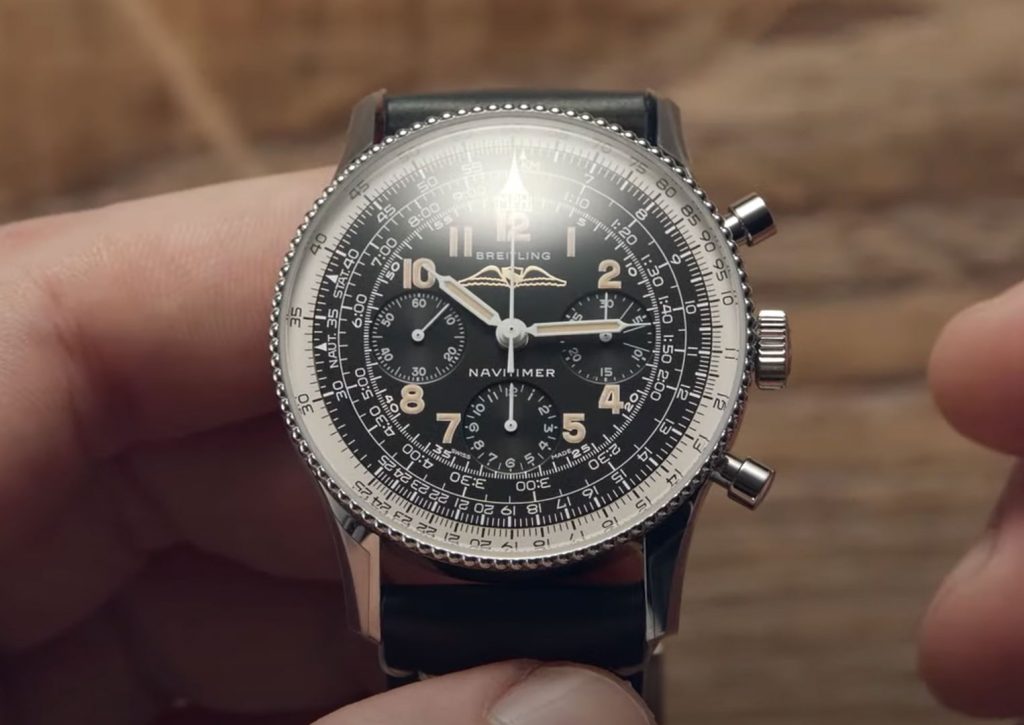The decade gone marked the occasion of the Breitling Navitimer’s sixtieth anniversary, and as that decade drew to a close, Breitling replica released what is an almost exact replica of that original reference, the 806. It seems now is as good a time as any to get on board the Breitling train and treat yourself to this prototypical pilot’s watch—but should you?
The Navitimer Did It First
Given that aeroplanes have only existed since the early 1900s, it stands to reason that pilots’ watches didn’t start appearing until then as well. There’s foresight and then there’s predicting the future, and you’d have to be a pretty clever sort of person to think ahead on the whole flight business and make a watch specifically for pilots.

Really, it’s the other way around. As flight became possible, the limitations revealed themselves, and for keeping time, there was a big one. People weren’t wearing wristwatches back then; they were wearing pocket watches. Now imagine straddling the Kitty Hawk, basically a glorified kite with an engine bolted on, and it’ll soon become clear that fumbling around for a pocket watch whilst trying not to plummet to the ground and die is not ideal.
It took only a year after the Wright Brothers’ maiden flight for things to change, and it was eccentric pilot Alberto Santos-Dumont who ushered in that change. He was a keen competition pilot, and for him, timekeeping had the edge over survival, and so his main concern was making sure he was winning. For that he needed a watch he could check without letting go of his contraption, and so he asked friend Louis Cartier to come up with something. The solution? The wristwatch.
For a long time, the simple act of strapping a watch to a wrist was convenience enough for pilots, with the watches simply getting bigger and clearer. For almost fifty years there was no real advancement—that is, until Breitling decided to release the Navitimer.
It was no moment of lucid enlightenment—the Swiss made fake Breitling Navitimer was the culmination of three branches of specialist knowledge that only Breitling had available. First was the manufacture of chronographs, of which Breitling invented the typical twin-pusher layout we’re so familiar with today; second was experience in avionics, an industry Breitling supplied cockpit instruments to; and thirdly was a platform to build upon, the slide rule Chronomat, previously designed as a calculator tool for scientists, engineers and mathematicians. Put all that together and what do you get? The Navitimer, the first watch truly designed for pilots.
It’s A Proper Pilots’ Watch
What separates the black dial copy Breitling Navitimer from the pilots’ watches before it is plainly evident on the dial; it looks as busy as an aircraft cockpit. Pilots need to know the time of course, and for half a century that was all the manufacturers of watches were willing to concede, but Breitling knew better. The Navitimer was to be a true pilots’ watch—not just a watch that’s more convenient to read without having to let go of the flight controls, but one that offered functionality beneficial specifically to pilots.
As I said, the design was borrowed from the earlier Chronomat, a watch that added simplicity to the complex calculations undertaken by professionals during the course of their daily work. Multiplication, division, rates of change, rule of three—it could do it all. Quite simply, Breitling clone was aiming for the stars with the Chronomat, intending for it to become the smartwatch of its generation, a wrist-worn computer in the true sense of the term that it hoped would become a must-have tool in industry.
It didn’t quite work out like that, but there was an alternative: use the company’s knowledge of aircraft instruments to recalibrate the Chronomat into a navigation timer—or Navitimer. Now it could be used to measure speed, rate of climb or descent, fuel consumption, distance—exactly the kinds of things a pilot might need to calculate in flight.
To say it was a success is an understatement. The automatic movement replica Breitling watch was released exclusively through the Aircraft Owners and Pilots Association—who actually urged Breitling to make the thing in the first place—as a must-have for in-flight problem-solving. No more loose slide rules, no more tables—a pilot could trust on their watch to make sure they got where they needed to go, all with a twist on the smoothly knurled bezel.
So, although the Navitimer is a long way off being the first watch made for pilots by some fifty years, it is the first watch made exclusively for pilots, that offers an inventory of functions that are not only useful in the air, but imperative. This is before smartphones, before digital computers, before a cockpit was festooned with screens and when the calculations were done in the pilot’s head. The Breitling Emergency’s built-in distress beacon may save a pilot if they crash, but the Navitimer stops them crashing in the first place.